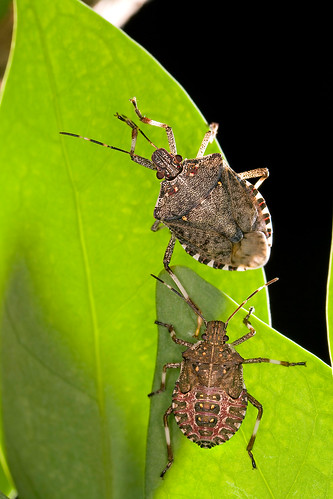
Calling all insect enthusiasts and frustrated gardeners! USDA scientists need your help in documenting Brown Marmorated Stink Bugs (BMSB) in your home. Beginning September 15th through October 15th, we’re asking citizens across the Mid-Atlantic region of the United States to record daily counts of this pest on the exterior of their homes, along with their location and the time of each count. While USDA scientists are focusing on the Mid-Atlantic region, any data they can get from other U.S. regions would also be helpful to their research.
The quest to find out just how many stink bugs there are, and how they behave, is the brainchild of a consortium of researchers from USDA, the University of Maryland, Pennsylvania State University, Rutgers University, Virginia Tech, the Northeastern IPM Center, Oregon State University, North Carolina State University, Cornell University, the University of Delaware and Washington State University. This project is represented on the website, “Stop BMSB (www.stopbmsb.org),” which was launched in 2011.
The project involves more than 50 scientists who are investigating the impact BMSB have on grapes, orchard crops, small fruits, ornamental crops and vegetables, as well as ways to prevent or minimize the pest’s impact. BMSB have been found in 40 states and have caused the most damage in the Mid-Atlantic region. The value of at-risk crops where BMSB have been established or identified exceeds $21 billon.
Because landscape features such as woodlands, structures, roads and different land use types affect the spread of the insects, it is important to collect data related to BMSB locations. BMSB survive cold winter temperatures near farmland in homes, office buildings and warehouses.
Scientists are just beginning to understand how landscape features will be a key component in combating stink bugs. Volunteers willing to count their stink bugs can contact USDA-Agricultural Research Service (ARS) entomologists Tracy Leskey (tracy.leskey@ars.usda.gov), Doo-Hyung Lee or Torri Hancock at (304) 725-3451, at the ARS Appalachian Fruit Research Laboratory in Kearneysville, West Virginia.
Participant forms to record BMSB counts can be printed by going to http://www.stopbmsb.org/2014-count
